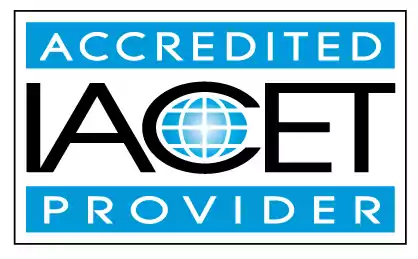Describe the steps to use when collaborative coaching with teachers are not a match.
When collaborative coaching with teachers is not a match, follow these steps to handle the situation effectively. Learn about the techniques used in successful coaching and mentoring to enhance professional growth. Explore how to navigate challenges and foster a positive environment in early childhood education and child care centers.Trainings incorporating this outcome
CDA Subject Areas
Proficiency Level
Target Audience
Topic Areas
States
Alabama (4) Alaska (4) Alberta (4) Arizona (4) Arkansas (2) Australia (3) California (4) Colorado (4) Connecticut (4) Delaware (4) District of Columbia (4) Florida (4) Georgia (4) Hawaii (4) Idaho (4) Illinois (2) Indiana (4) Iowa (4) Jamaica (3) Kansas (4) Kentucky (2) Louisiana (4) Maine (4) Manitoba (3) Maryland (4) Massachusetts (4) Michigan (4) Minnesota (4) Mississippi (4) Missouri (2) Montana (4) Nebraska (3) Nevada (2) New Hampshire (4) New Jersey (2) New Mexico (4) New York (2) Newfoundland and Labrador (4) North Carolina (3) North Dakota (4) Nova Scotia (3) Ohio (4) Oklahoma (4) Ontario (2) Oregon (4) Pennsylvania (4) Prince Edward Island (3) Puerto Rico (4) Quebec (3) Rhode Island (4) Saskatchewan (4) South Carolina (2) South Dakota (4) Tennessee (2) Texas (4) Thailand (3) United Kingdom (3) Utah (4) Vermont (4) Virgin Islands (3) Virginia (4) Washington (4) West Virginia (4) Wisconsin (4) Wyoming (3)
120 hours courses
45 hours courses
5 hours courses
3 hours courses
Related Outcomes
- Describe techniques used in successful coaching and mentoring.
- Describe the steps teachers should take to identifying challenging behaviors.
- Describe how to use the Strengthening Families Self-Assessment for program improvement.
- List the misconceptions about the use of coaching in early intervention.
- Describe the importance and value of coaching and mentoring.
- Describe positive discipline strategies to use in the classroom.
- Describe the various ways teachers can address challenging behaviors in the classroom.
- Give examples of strategies teachers can use to communicate with parents regarding challenging behaviors.
- Describe what is a professional growth plan for coaching and mentoring.
- Describe how sign language can be used as a means of communication with infants
- Describe strategies and experiences to promote collaboration between child and youth care professionals and programs and other professionals involved in the care and education of all children and youth.
- Describe ways that coaches and mentors can observe and assess coachees and mentees.
- Describe the use of safe sleep practices.
- Describe approaches to coaching.
- Describe nonverbal communication as it relates to coaching and mentoring.
- Describe how language is one of the many ways through which culture affects development.
- Describe strategies to incorporate mathematics into teaching practices.
- Define active play in the early childhood classroom and describe its benefits for young children.
- Describe the primary learning centers and their components.
- Describe the proper procedures of medication administration including: authorizations forms, documentation, storage, training, emergent issues, and resources.
Related Articles
- Benefits of Instructional Coaching
- Introduction to Coaching and Mentoring
- Managing Behaviors in the Early Childhood Education Classroom
- Shaping Futures with Early Childhood Education Training
- Building Relationships: Connecting with Children and Families in Preschool
- Magicians in the Classroom: How Preschool Teachers Turn Chaos into Learning
- 💛 From Staff to Family: Stronger Teams in Child Care
- 🧩 How Do I Support a Student with Autism While Managing Classroom Behavior and Learning? 💕
- How Can We Help Children Develop Lifelong Healthy Eating Habits?
- How Can We Adapt Our Teaching Approaches to Meet Different Learning Styles in Young Children?
- 🗣️ How Can I Talk to Parents About Bullying Without Blame or Conflict?🤝
- 🔍 What Do You See When You Watch a Child Learn?
- 💛🧩 How Can I Make My Teaching More Inclusive for Children with Autism?
- Open-Ended Art Activities That Build Confidence in Preschoolers
- Self-Paced Online Training for Early Childhood Educators
- What Is the Difference Between Coaching and Supervising in Child Care?
- Online Child Care Training: What to Look for and Why It Matters
- The director’s “leadership operating system” (priorities, routines, accountability)
 12 CEUs
12 CEUs